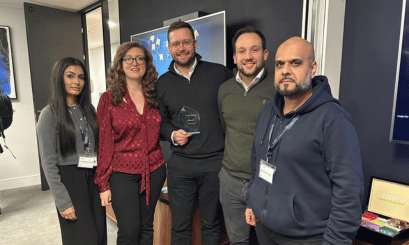
Thank you for registering
We are thrilled to confirm your registration for our upcoming Birmingham Digital Leadership Report event
We look forward to seeing you in Birmingham
What happens next?
Mark your calendar to ensure you don't miss out on this exciting event.
You will shortly receive an email from us confirming your registration and the event key information, we may ask for this when you arrive so please keep this safe. We will also update you on keynote speaker announcements and require you to complete your food order before the event.
If you are unable to attend this event or you have any other queries please contact us here.
Discover our News & Insights
Harvey Nash awarded Allegis Rising Star Award for the EMEA region
November 19, 2025 - Harvey Nash is delighted to announce that we have been awarded the Allegis Global Solutions Rising Star Award for the EMEA re...
Building a data‑dream team
In a recent opinion piece for Computer Weekly, Jack Capel, UK South Director, expresses that organisations must get their data foundation right before...
A turning point in the AI talent race
In a recent piece for Computer Weekly, Simon Crichton, Harvey Nash CEO, argues that the U.S. decision to hike visa fees for skilled workers may mark a...
Nash Squared Announces Integration of Spinks Brand into Harvey Nash
Nash Squared, the global leader in technology and talent solutions, today announced the integration of the Spinks brand into Harvey Nash, its speciali...



